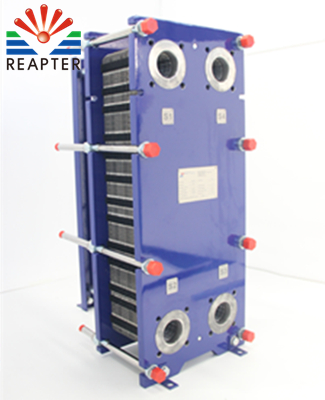Application of Plate Heat Exchanger in Textile Printing and Dyeing Process
The importance of plate heat exchangers in the textile printing and dyeing process is mainly reflected in the fact that on the one hand, in the textile printing and dyeing process, almost every process requires a large amount of hot water and steam. These used hot water and condensed water are usually directly Being discharged to the sewer, the waste heat has not been fully and reasonably recovered, resulting in a large amount of waste of energy. Therefore, if the heat in the wastewater can be recovered and the influent water can be preheated, the steam consumption can be reduced. Plate heat exchanger in the textile printing and dyeing process may well play this role.
On the other hand, excessively high water temperature discharge will affect the ecological environment. Therefore, waste heat recovery in printing and dyeing plants is very necessary. Today, I will introduce the application of plate heat exchanger in textile printing and dyeing process.

The printing and dyeing process in the textile industry is a particularly critical step in textile manufacturing. Various dyes are mixed with each other in different proportions and different temperatures, and act on the raw materials to form patterns and clothing colors that everyone likes. Previously, the temperature control of the dyeing agent was very important. Too high or too low temperature will affect the dyeing effect, resulting in the quality of the garment. The plate heat exchanger is a new type of heat exchange equipment with high heat transfer efficiency, small size, simple structure and convenient maintenance. It is installed in the heat recovery system. The heat recovery can be realized in the plate heat exchanger in the textile printing and dyeing process. It also protects our environment.
Related information
- After consulting the master for ten years, only to know that the plate and shell heat exchanger applications are so many!
- Design method of plate heat exchanger average temperature difference method
- Why is GEA plate heat exchanger so popular in the food industry?
- Shandong production of titanium palladium, Hastelloy alloy, 254SMO, nickel plate and other plate heat exchanger plate manufacturers
- Plate and shell heat exchangers for low-pressure steam heat recovery are the most environmentally-friendly artifacts that have been in use recently.
- Committed to the pursuit of quality perfect plate heat exchanger enterprises
Relevant article
- Application of Plate Heat Exchanger in Textile Printing and Dyeing Process
- How to design the plate angle of a plate heat exchanger
- Application of plate and shell heat exchanger in special working conditions such as high temperature, high pressure and high corrosion
- Understand the condensate heat recovery plate heat exchanger
- Causes of swelling of plate heat exchanger gaskets
- Plate heat exchanger is widely used in hotel industry
- Application of GEA free flow plate heat exchanger in glucose processing
- REAPTER Food Plate Heat Exchanger
- Application of plate and shell heat exchanger in boiler water supply
- The reason of affecting the operation of plate heat exchanger
Latest information
- Application of Plate Heat Exchanger in Textile Printing and Dyeing Process
- How to design the plate angle of a plate heat exchanger
- Application of plate and shell heat exchanger in special working conditions such as high temperature, high pressure and high corrosion
- Understand the condensate heat recovery plate heat exchanger
- Causes of swelling of plate heat exchanger gaskets
- Plate heat exchanger is widely used in hotel industry
- Application of GEA free flow plate heat exchanger in glucose processing
- REAPTER Food Plate Heat Exchanger
- Application of plate and shell heat exchanger in boiler water supply
- The reason of affecting the operation of plate heat exchanger








